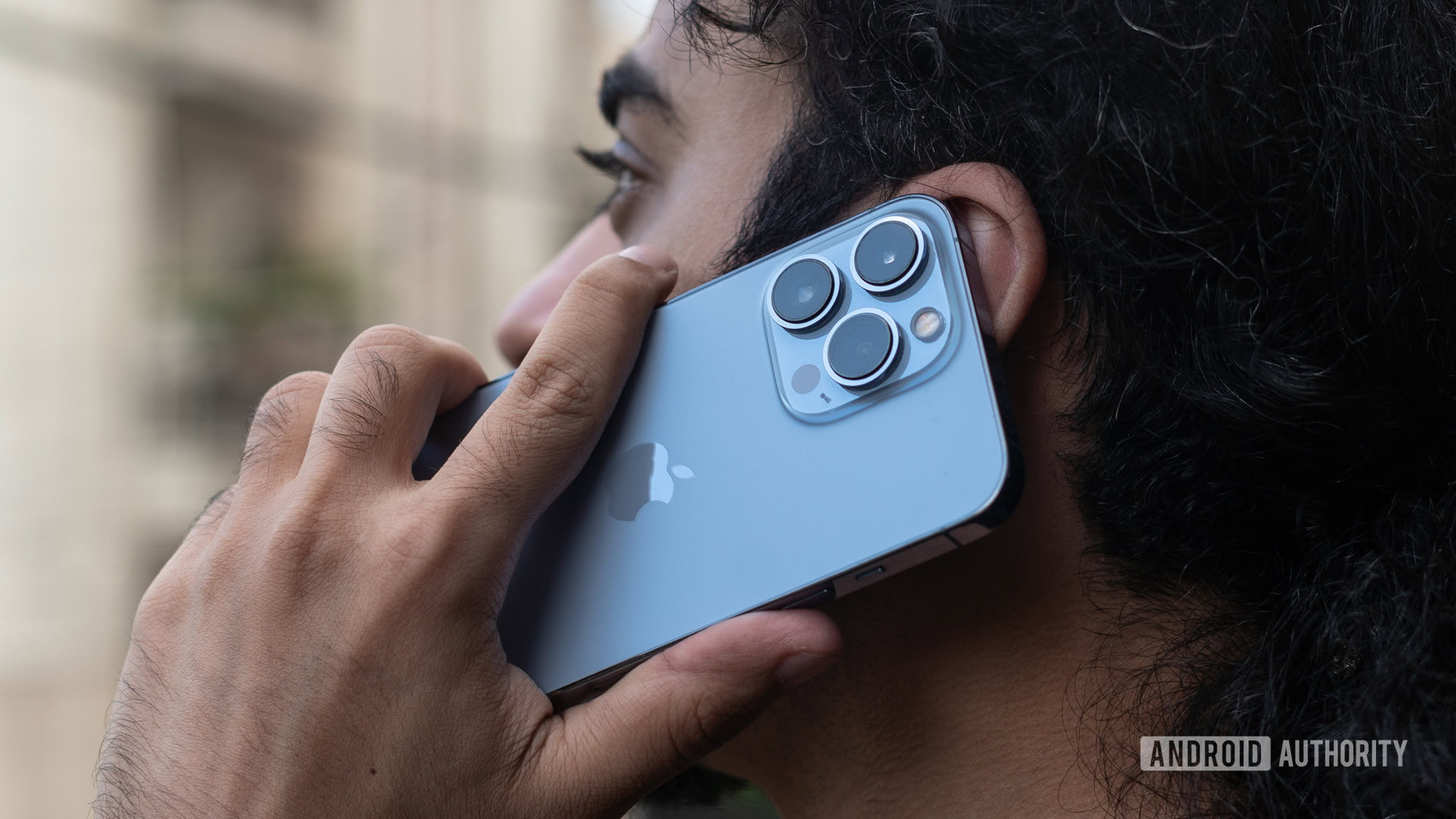Affiliate links on Android Authority may earn us a commission. Learn more.
iPhone not ringing? Here's how you can try to fix it
It's not just about the mute switch.
We’ve become accustomed to smartphones being do-it-all devices, but of course, they really are just handheld computers if you start missing phone calls. If you’re not hearing your iPhone ringing, there are a few reasons that might be happening — and a few tactics you can try to get things back where they should be.
How to fix an iPhone not ringing

Dhruv Bhutani / Android Authority
Some of the troubleshooting options below are going to seem obvious, but that’s intentional. We’re covering all the bases, and you’re welcome to treat them as a checklist rather than a step-by-step guide. If you suspect one option or another is more likely to fix the problem, by all means, jump ahead.
- Make sure your iPhone’s mute switch isn’t on. On most iPhones Apple refers to this as the “ring/silent” switch, and on the iPhone 15 Pro and Pro Max, mute is one of the possible functions for the Action button. Needless to say though if the mute toggle is on, your phone is only going to vibrate for incoming calls, not ring. You can bring an iPhone 15 Pro out of silent mode by finding the option under Settings > Sounds and Haptics.
- Increase ringtone volume. Speaking of the Settings > Sound and Haptics menu, check that the Ringtone and Alert Volume slider is high enough to be audible without being deafening. Usually, it doesn’t need to be any higher than 50%. You might also consider changing your ringtone if it’s too subtle.
- Check that Do Not Disturb (or another Focus mode) isn’t on. By default Focus modes like Do Not Disturb or Sleep forward most calls straight to voicemail, which is a good thing, since the alternative might be waking up to a 2AM robocall. You can customize Focus modes by going to Settings > Focus, and disable an active one at any time by opening Control Center. If there is an active mode, you’ll see a button with its name and icon. Otherwise, you’ll just see Focus.
- Check that your iPhone isn’t connected to Bluetooth headphones or speakers. Naturally your iPhone is going to push ringtones to a connected Bluetooth audio device first, since it assumes that’s where you’re listening. The easiest way to check if audio is going somewhere else is to open Control Center and tap on the AirPlay icon (concentric rings and an arrow) in the music/podcasts pane. Alternately, you can just go to Settings > Bluetooth and see which devices are listed as connected. To temporarily disconnect something, tap the i (info) button next to a device and choose Disconnect.
- Check that your iPhone isn’t connected to CarPlay. This is a rare and usually short-lived situation, but if your vehicle supports wireless CarPlay and you’re within range when your partner (or someone else) starts it up, your iPhone may automatically connect and shift its audio. If you’re at home, the quickest way around this is to go to Settings > Wi-Fi and re-select your router. If you’re somewhere else, try temporarily disabling your iPhone’s Wi-Fi or using your car’s dashboard menus to change the connected iPhone.
- Disable the Silence Unknown Callers option. This feature is one of several ways to block spam calls on an iPhone, but it can backfire if you’re being called by someone who isn’t in your contacts — like a new doctor, plumber, or recruiter. You can switch the feature off by going to Settings > Phone > Silence Unknown Callers and flipping the toggle.
- Verify that important callers aren’t being blocked. If someone specific you know is complaining that you’re not answering their calls, you may have blocked them once and forgotten to unblock them. Go to Settings > Phone > Blocked Contacts and look for familiar numbers or names. You see any entries you want to unblock, tap the Edit button, then the appropriate red button(s) to remove them.
- Disable Calls on Other Devices. If you’ve got a Mac or iPad, and this feature is on, it could be that one of those devices is ringing instead of your iPhone. That is a glitch, mind — every device is supposed to ring as long they’re on the same Wi-Fi network. If you suspect you’re affected, go to Settings > Phone > Calls on Other Devices and toggle the option off. You should turn the feature back on if it doesn’t make a difference.
- Disable call forwarding. Most people don’t have any use for forwarding, but if you do and you previously set it up, calls could be ringing on the wrong phone. Go to Settings > Phone > Call Forwarding and disable the option unless you absolutely need it active.
- Restart your iPhone. If you’ve tried every other option on this list that might apply to you, there’s a non-zero chance that a temporary bug is interfering, in which case a restart should undo it. This clears some caches and kickstarts processes.
- Check for iOS updates. Normally this sort of option would be higher on a troubleshooting list, but ringtones are such a fundamental (and simple) part of the iPhone platform that they’re unlikely to break. You can scan for iOS updates by going to Settings > General > Software Update. If there is one available, be sure your iPhone is well-charged and connected to Wi-Fi before you install it. Set aside at least 15 to 30 minutes, too.
You might like